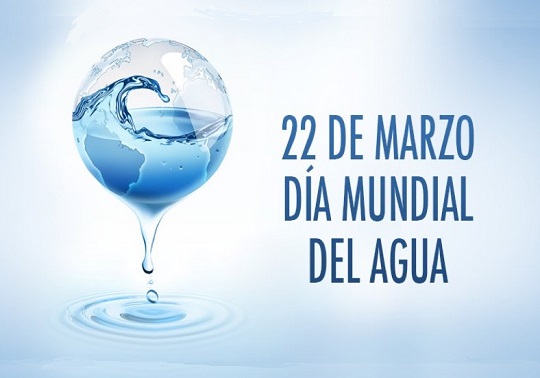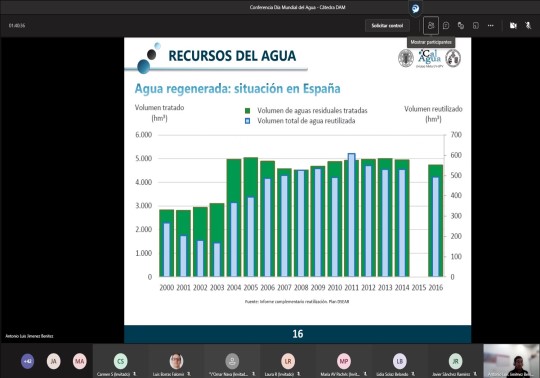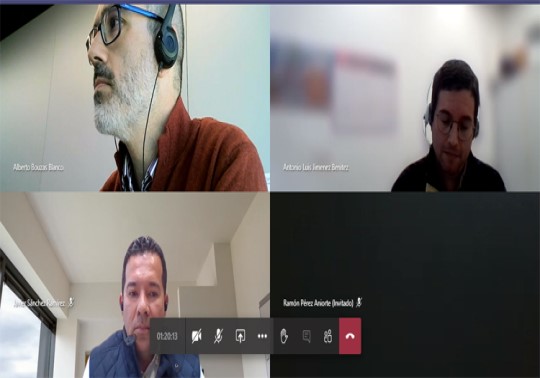
On their interventions, Researchers Javier Eduardo Sánchez and Antonio Jiménez Benítez addressed the presence of microplastics in wastewater and their resource potential, respectively
On the occasion of the World Water Day, March 22nd, the DAM Chair for Integral Management and Resource Recovery of Wastewater held its “III Lecture Series”, this time featuring the lectures of Researchers Javier Eduardo Sánchez (DAM) and Antonio Jiménez Benítez (IIAMA-UPV)
The event, which took place online and was attended by more than fifty assistants, served to deepen on different wastewater-related aspects, such as the presence of new contaminants and their resource potential within a context delimited by the implantation of circular economy.
In the lecture Microplásticos en los medios acuáticos: Presente y futuro (Microplastics in aquatic environments: Present and future), Javier Eduardo Sánchez firstly addressed the origin and provenance of these plastic pieces that are no bigger than 5 millimetres and contaminate the environment.
During his lecture, he presented the work that’s being developed by DAM technicians within the FIBERCLEAN research project, with the goal of identifying diverse technological solutions allowing to decrease the microfiber and microplastic amount on the whole value chain of the textile industry, from the fabrication of new threads, fabrics and products to their disposal or recovery in WWTPs.
“We are developing new technologies for the disposal or decrease of microfibers in water treatment processes. To that end, we have designed and built a pilot plant, to which we have incorporated an elutriation system allowing to sort microplastics by density, as well as a hydrocyclone separation module. Moreover, we’re analysing which microorganisms are capable of breaking them down”, clarified the DAM technician.
He additionally explained the first studies included in the ENZCYLE project, which began on September 2020 and seeks to assess and improve non-recycled plastic fractions, “via the development of enzymatic processes allowing to obtain products of high added value and assisting in the breakdown of microplastics”, highlighted Javier Eduardo Sánchez.
On the other hand, in his presentation El agua residual como fuente de recursos: oportunidades, barreras y retos (Wastewater as resource: opportunities, obstacles and challenges), Antonio Jiménez Benítez (IIAMA-UPV) addressed certain advancements and developed works to promote the circular economy of the field.
“Boosting the circular economy in wastewater treatment is fundamental. We must keep the materials inside the chain of value for as long as possible, so that raw material consumption and waste production are reduced”, stated the researcher of the CALAGUA group.
In his intervention, he reminded that sustainability is a concept that the social, economic and environmental aspects must include, especially in a region such as the Mediterranean, where 20% of the population permanently lives under hydric stress, reaching 50% in the summer season and whose trend for 2030 is clearly increasing.
“Climate change entails a decrease of hydric resources, which a reason for the circular economy to be seen as an opportunity, given that, in Europe, it could reutilise 6 times more water than what’s currently being regenerated. We must promote an efficient transition and move onto a RRF (Resource Recovery Facility) from the classic WWTP”, emphasised Antonio Jiménez.
Lastly, the work carried out in the “Innovation Deal” was used as example; it’s a collaboration agreement on regulatory barriers titled “Sustainable wastewater treatment combining anaerobic membrane technology and water reuse”, with which normative barriers preventing reutilisation were analysed and a AnMBR-technology-based module for the specific case of Milan’s WWTP was developed with very positive results.
Images:















